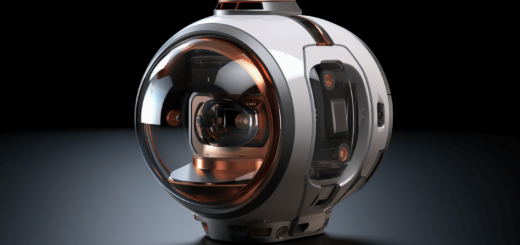Top Lens Choices for the Canon Rebel T7: Enhancing Your Photography Experience
As an aspiring photographer or a seasoned professional, it’s essential to choose the right lens for your Canon Rebel T7 to enhance your photography experience. In this detailed article, we will explore numerous top lens choices suitable for various photography styles and situations. We will also discuss the key features and factors to consider when selecting the perfect lens for your Canon Rebel T7.
Understanding Lens Choices for Your Canon Rebel T7
Before we dive into the top lens choices, it is crucial to understand the different types of lenses available and their purposes. Lenses can be broadly categorized into three types: prime, zoom, and specialty lenses.
- Prime lenses have a fixed focal length, which means you cannot zoom in or out. However, their optical quality is typically superior to zoom lenses, making them an excellent choice for capturing sharp images with better low-light performance.
- Zoom lenses offer a range of focal lengths, allowing you to capture a variety of shots without changing lenses. While they may not have the same image quality as prime lenses, their versatility makes up for it in most situations.
- Specialty lenses cater to specific photography styles or situations, such as macro photography or astrophotography. These lenses may have unique features and capabilities that set them apart from standard prime or zoom lenses.
Top 5 Lens Choices for the Canon Rebel T7
1. Canon EF 50mm f/1.8 STM
Often referred to as the “nifty fifty,” the Canon EF 50mm f/1.8 STM is an affordable, lightweight, and versatile prime lens. It is ideal for portrait photography, street photography, and low-light situations. Its wide aperture of f/1.8 makes it excellent for creating a beautiful bokeh effect (background blur) in your images, while the Stepping Motor Technology (STM) ensures smooth and quiet autofocusing.
2. Canon EF-S 18-135mm f/3.5-5.6 IS STM
A perfect all-in-one lens, the Canon EF-S 18-135mm f/3.5-5.6 IS STM offers a wide focal range for various photography styles, including landscapes, portraits, and travel. Its built-in Image Stabilization (IS) compensates for camera shake, ensuring sharp images even in low-light conditions. The STM technology delivers fast, quiet, and smooth autofocus, making it a great choice for shooting videos as well.
3. Sigma 17-50mm f/2.8 EX DC OS HSM
The Sigma 17-50mm f/2.8 EX DC OS HSM is a high-quality third-party zoom lens that provides a constant aperture of f/2.8 across the entire zoom range. Its large aperture makes it highly suitable for low-light photography and capturing stunning background blur. The Optical Stabilization (OS) system ensures steady and sharp images, while the Hyper Sonic Motor (HSM) delivers fast, quiet, and accurate autofocus.
4. Canon EF-S 60mm f/2.8 Macro USM
For those interested in macro photography, the Canon EF-S 60mm f/2.8 Macro USM is a must-have. This prime lens is designed for capturing small subjects and details at a 1:1 magnification ratio. With its bright f/2.8 aperture, it doubles as an excellent portrait lens, producing beautiful background blur. The Ultrasonic Motor (USM) ensures fast and silent autofocusing, further enhancing its versatility.
5. Samyang 14mm f/2.8 IF ED UMC
The Samyang 14mm f/2.8 IF ED UMC is a manual focus, ultra-wide-angle lens suitable for landscape photography, astrophotography, and architectural photography. Its ultra-wide perspective allows you to capture expansive scenes, while the f/2.8 aperture ensures excellent low-light performance. The lens features Ultra Multi-Coating (UMC) to minimize flare and ghosting, producing crisp and high-contrast images.
Factors to Consider When Choosing a Lens for Your Canon Rebel T7
There are several factors to consider when selecting the perfect lens for your photography needs. Some of the key factors include:
- Focal length: Determine the types of photography you plan on doing and choose a lens with a focal length that suits your needs. Wide-angle lenses are excellent for landscapes and interiors, while telephoto lenses are ideal for sports and wildlife photography.
- Aperture: A wide aperture (lower f-number) enables better low-light performance and a shallower depth of field for creating bokeh effects. However, wide-aperture lenses tend to be more expensive and heavier than their counterparts.
- Image stabilization: Lenses with built-in stabilization systems help compensate for camera shake, allowing you to shoot at slower shutter speeds and still get sharp images. This is especially useful for handheld shooting in low light or when using long telephoto lenses.
- Weight and size: Consider the weight and size of the lens, as it will affect the overall portability and comfort when using your camera. Heavier lenses can cause fatigue during long shooting sessions, while larger lenses may not fit in your camera bag easily.
- Price: Set a budget for your lens purchase and look for lenses that offer the best value for their price, considering the features and specifications they provide. Don’t forget to consider third-party lenses from brands like Sigma, Tamron, or Samyang, as they may offer similar performance at a lower cost.
Conclusion
Choosing the right lens for your Canon Rebel T7 can be a daunting task, but with this comprehensive guide, you’re better equipped to select the perfect lens for your photography needs. Remember to consider the focal length, aperture, image stabilization, weight, size, and price when making your choice. And don’t forget to explore third-party lens options to find the best value for your investment. With the right lens in hand, you’ll be well on your way to capturing stunning, professional-quality images with your Canon Rebel T7. Happy shooting!


